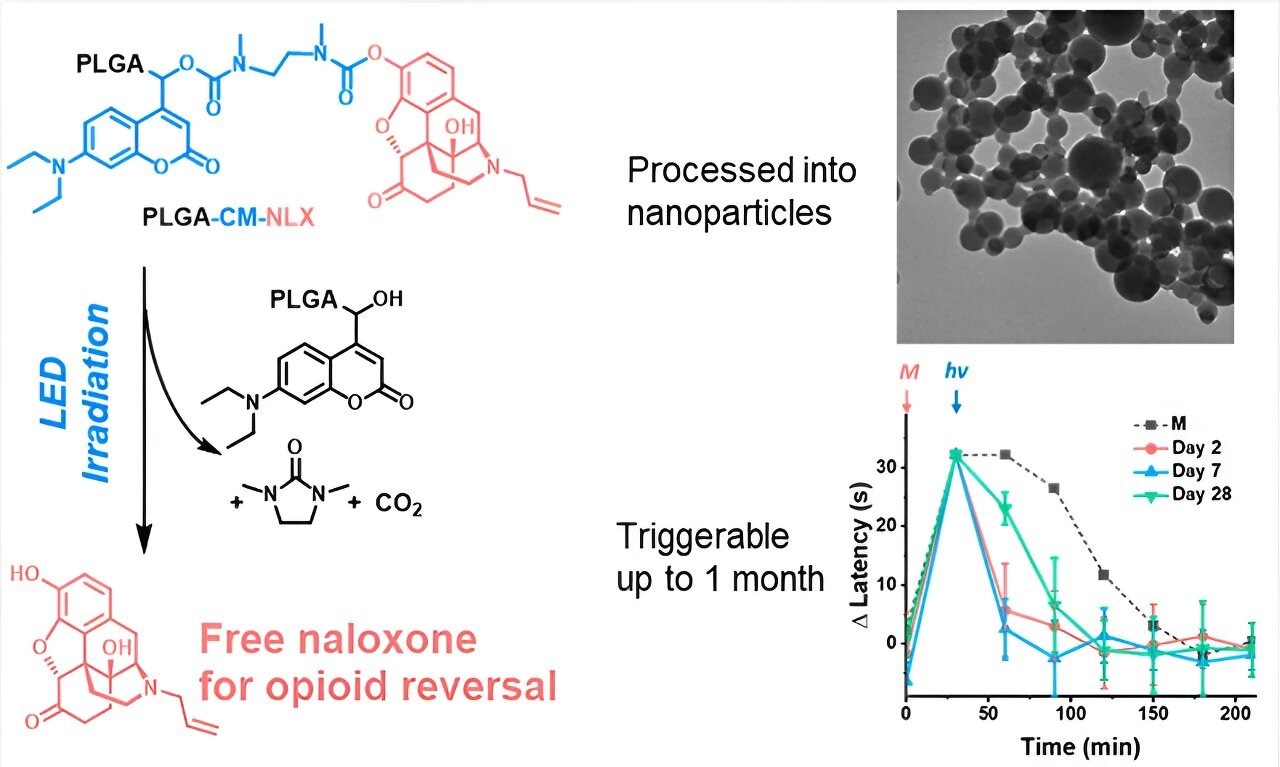In a proof-of-concept study published in Nano Letters, a team of researchers created injectable nanoparticles that, in response to blue light, released naloxone. This mechanism was triggered one month following injection in mice.

Image Credit: Nano Letters (2023). DOI: 10.1021/acs.nanolett.3c03426
Naloxone saves lives by quickly counteracting the effects of an opioid overdose—that is, if it is accessible when needed. Researchers are focusing on techniques to make the medication available in the body before it is needed to eliminate this element of chance.
The opioid crisis has severely impacted people’s lives since it started more than 20 years ago. The US Centers for Disease Control projects that 80,000 or more Americans perished from opioid overdoses in 2022 alone. When consumed in significant amounts, this family of drugs—which includes synthetic and naturally generated compounds—suppresses breathing by binding to particular receptors in the brain.
By attaching to the same receptors as opioids, naloxone inhibits their effects. The drug is now administered as a nasal spray or injection, and it must be taken as soon as possible following an overdose.
Daniel Kohane and colleagues built on the study of timing drug delivery to create a nanoparticle-based system that medical professionals could inject under a patient’s skin to administer naloxone to an individual with opioid use disorder, should that patient need it.
The nanoparticles were made by connecting naloxone molecules to a polymer that is regarded safe for humans, rendering the drug temporarily inert. A light-sensitive molecule called coumarin was used to connect the naloxone and the polymer.
Light having a wavelength of 400 nanometers, which the human eye perceives as blue, separated coumarin from naloxone, allowing it to freely migrate to opioid receptors and prevent its function. According to the researchers, the intensity of blue light necessary to dissolve the chemical bond makes it unlikely that sunlight or ambient indoor light will incorrectly trigger the device.
The researchers discovered that by subjecting the skin at the injection site to a blue LED light for two minutes, they could counteract the effects of the opioid morphine that the mice had received injections of both the nanoparticles and the drug. Additionally, the group was able to administer naloxone to mice three times in ten days from the same location.
For a month following injection, the system was still able to combat morphine, albeit with a slight drop in effectiveness. The experts suggest that this timeline could be extended with additional advancement. To maximize treatment effectiveness, they also mention the possibility of incorporating the blue LED required for naloxone release into a bracelet or even wearing it over the injection site.
Journal Reference:
Zhang, W., et al. (2023) On-Demand Opioid Effect Reversal with an Injectable Light-Triggered Polymer-Naloxone Conjugate. Nano Letters. doi:10.1021/acs.nanolett.3c03426